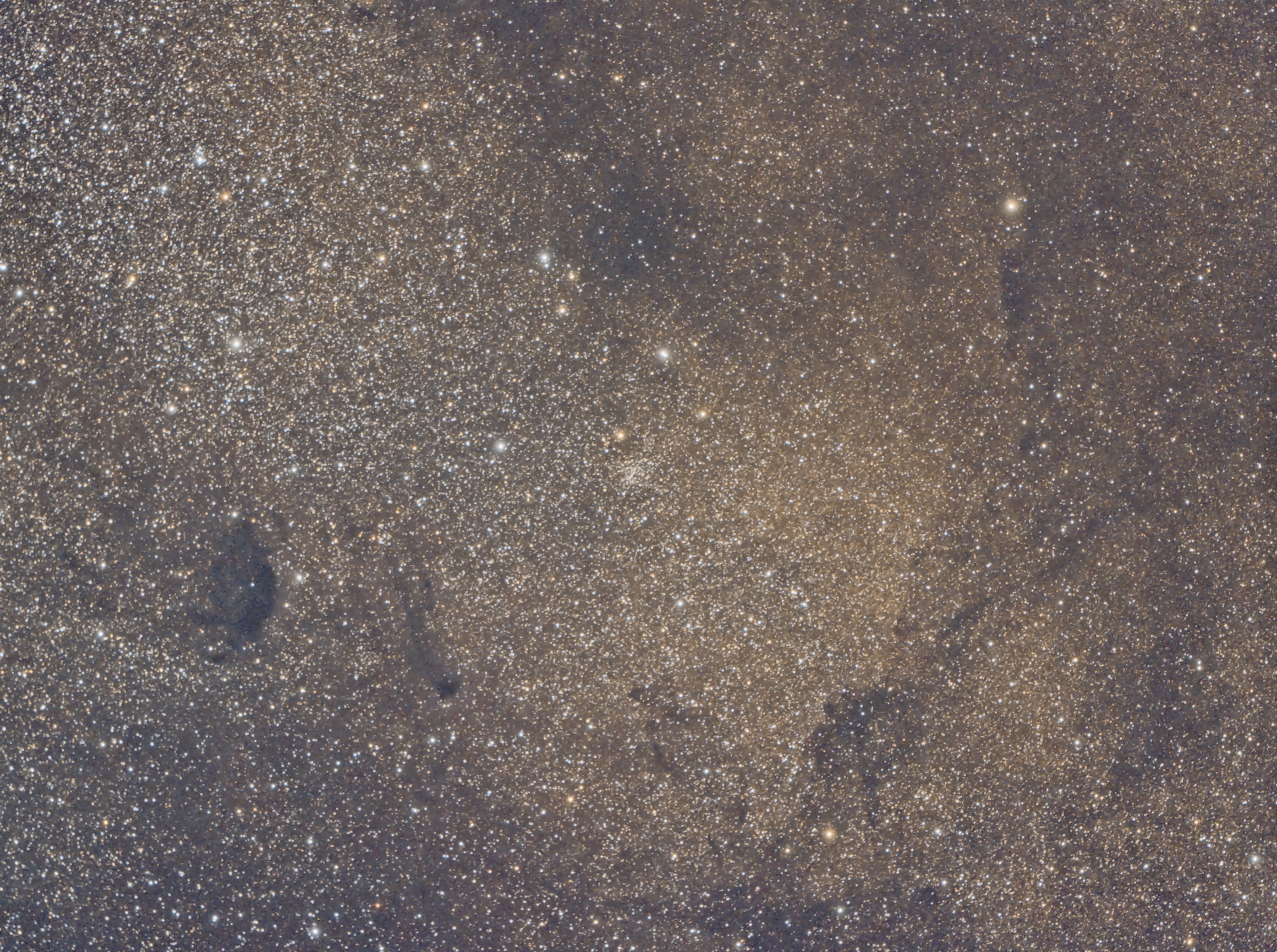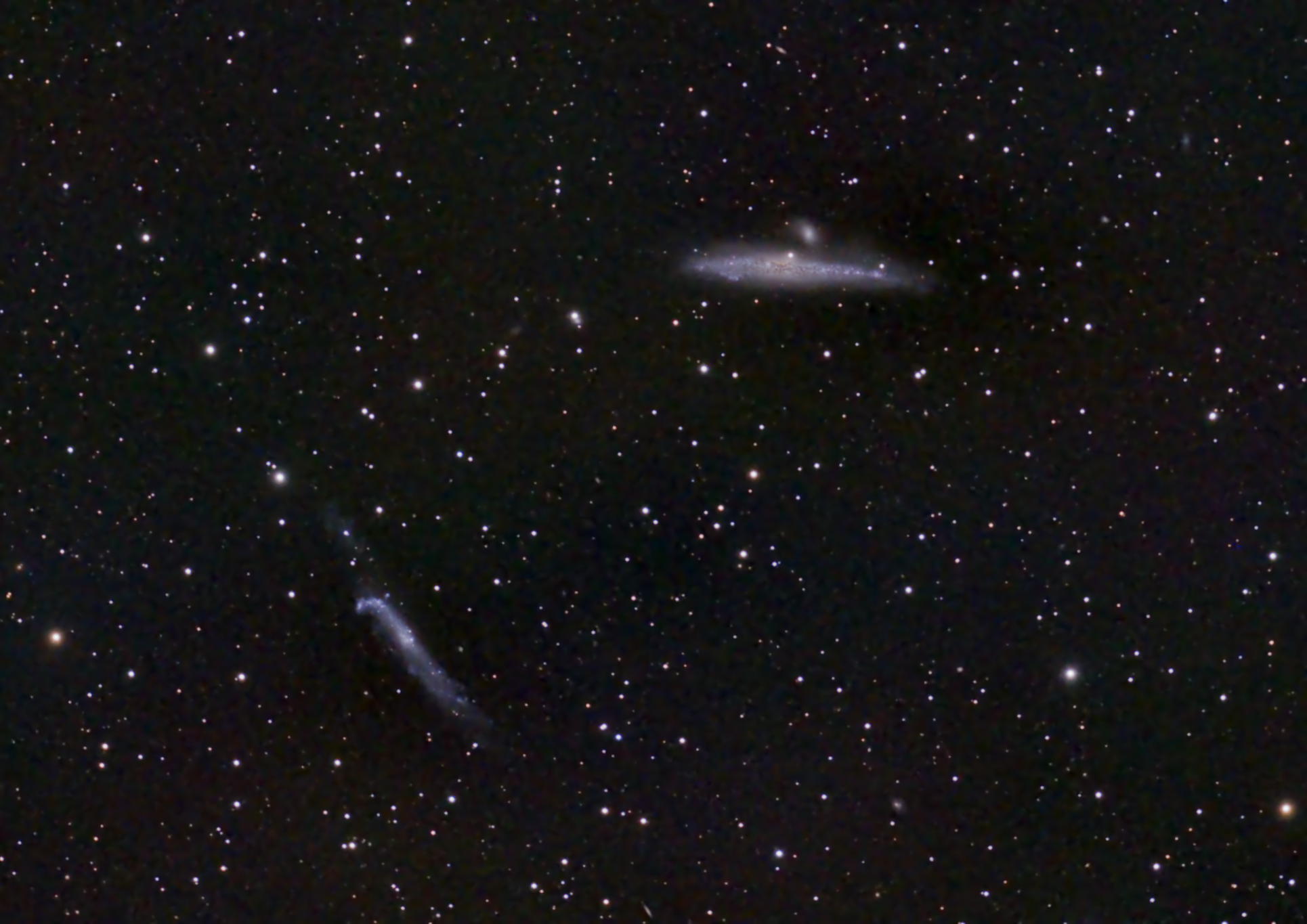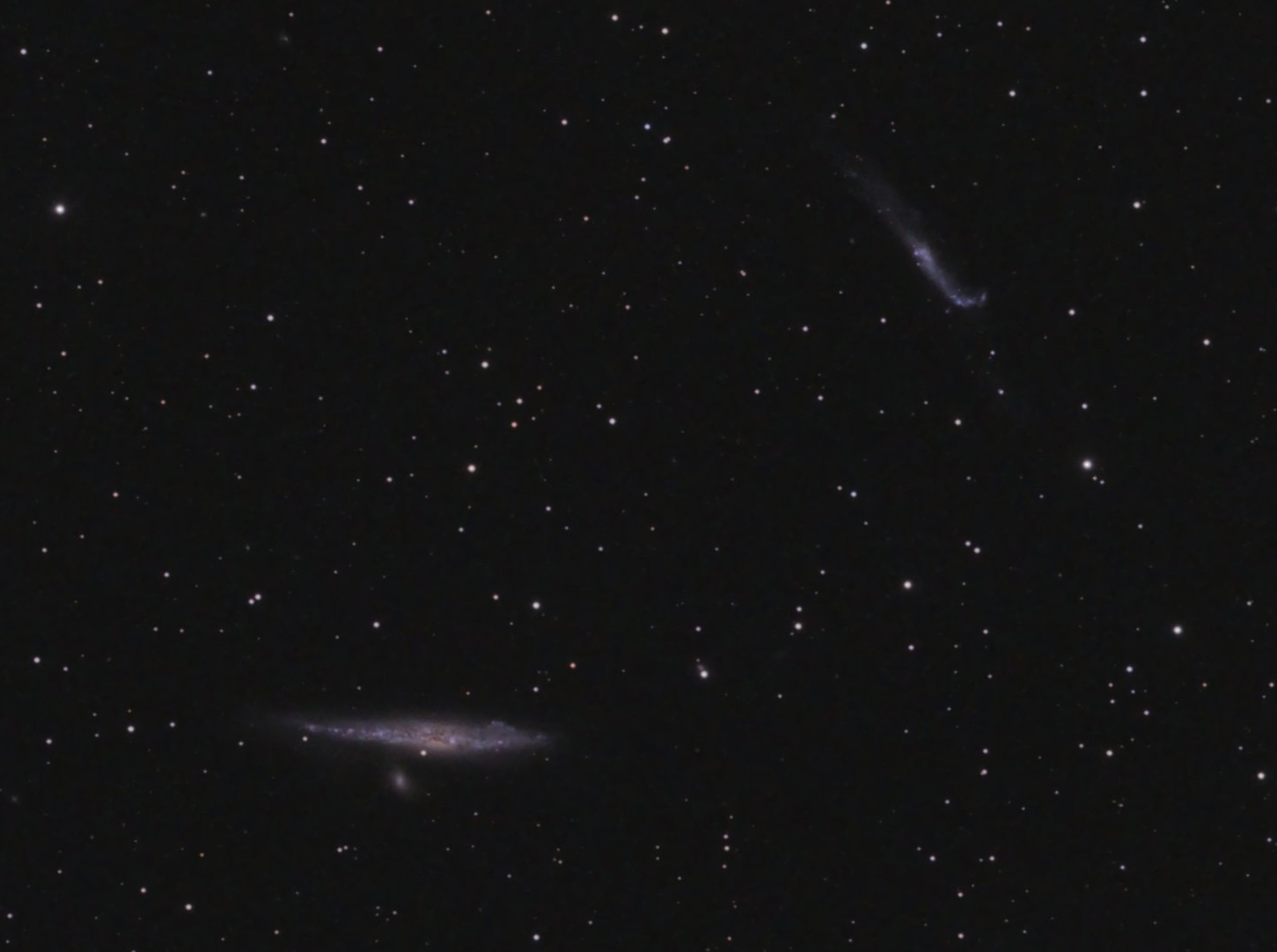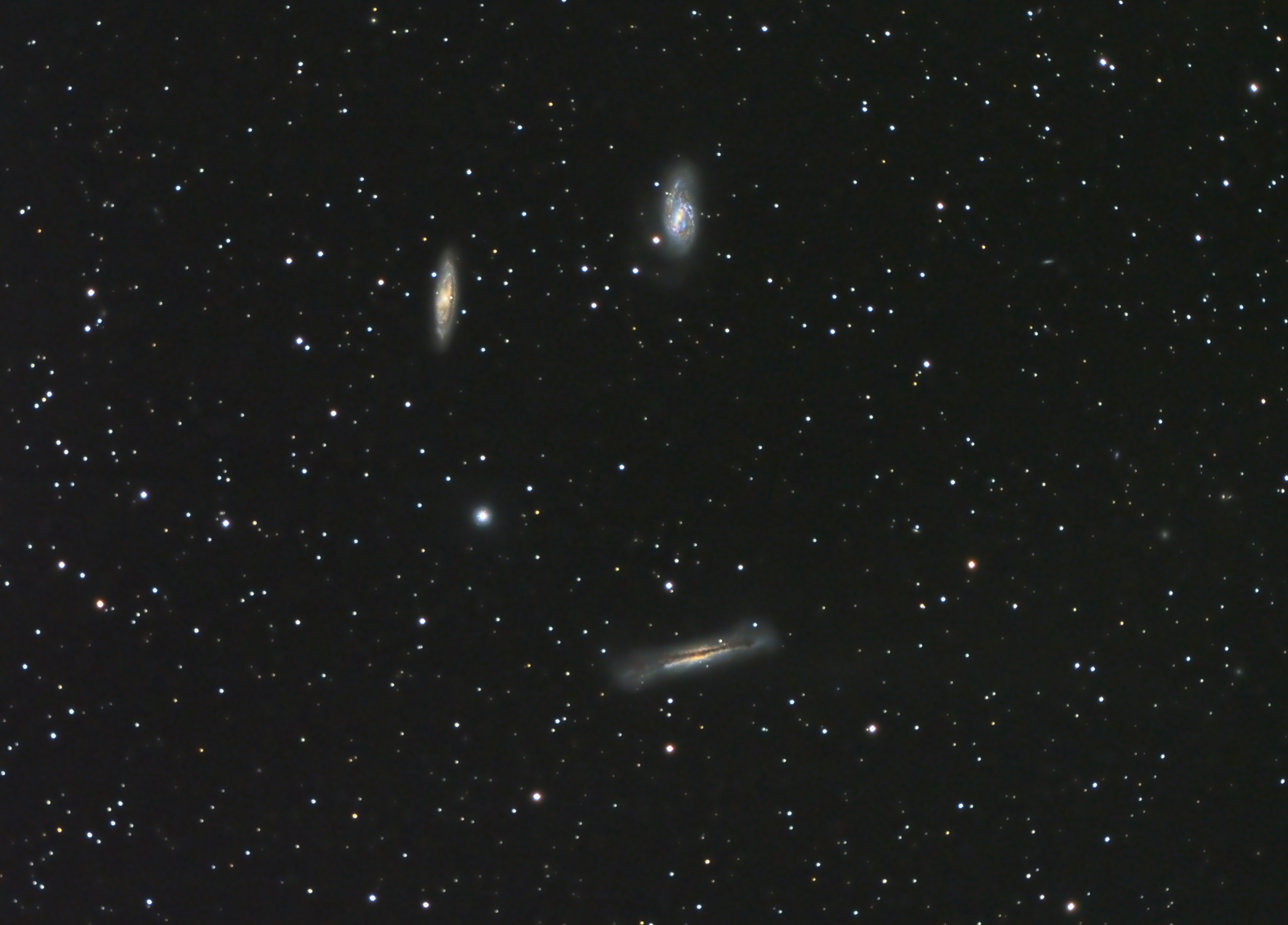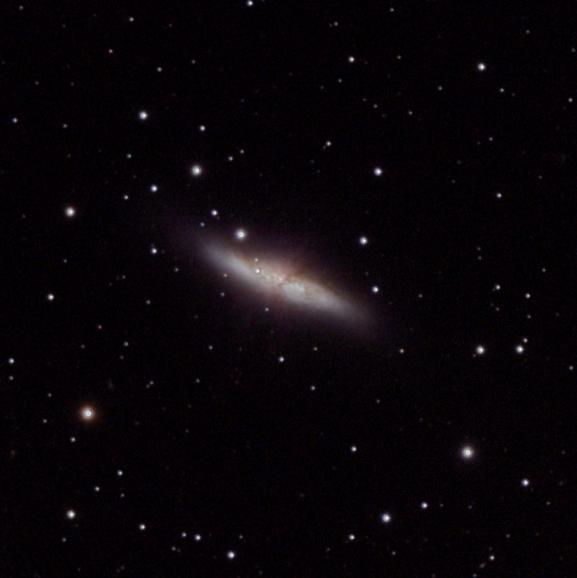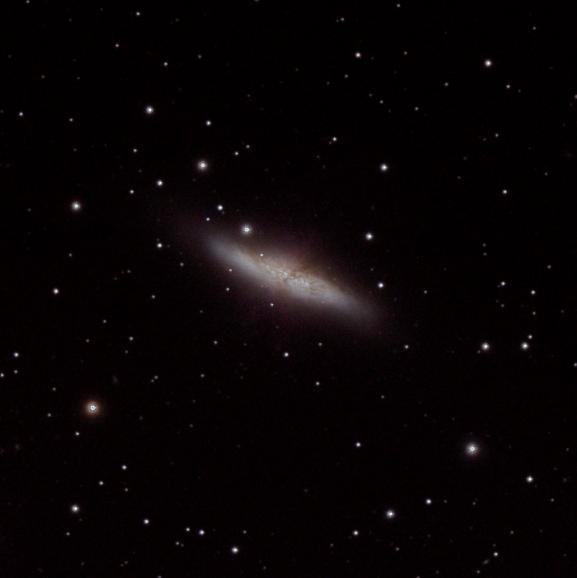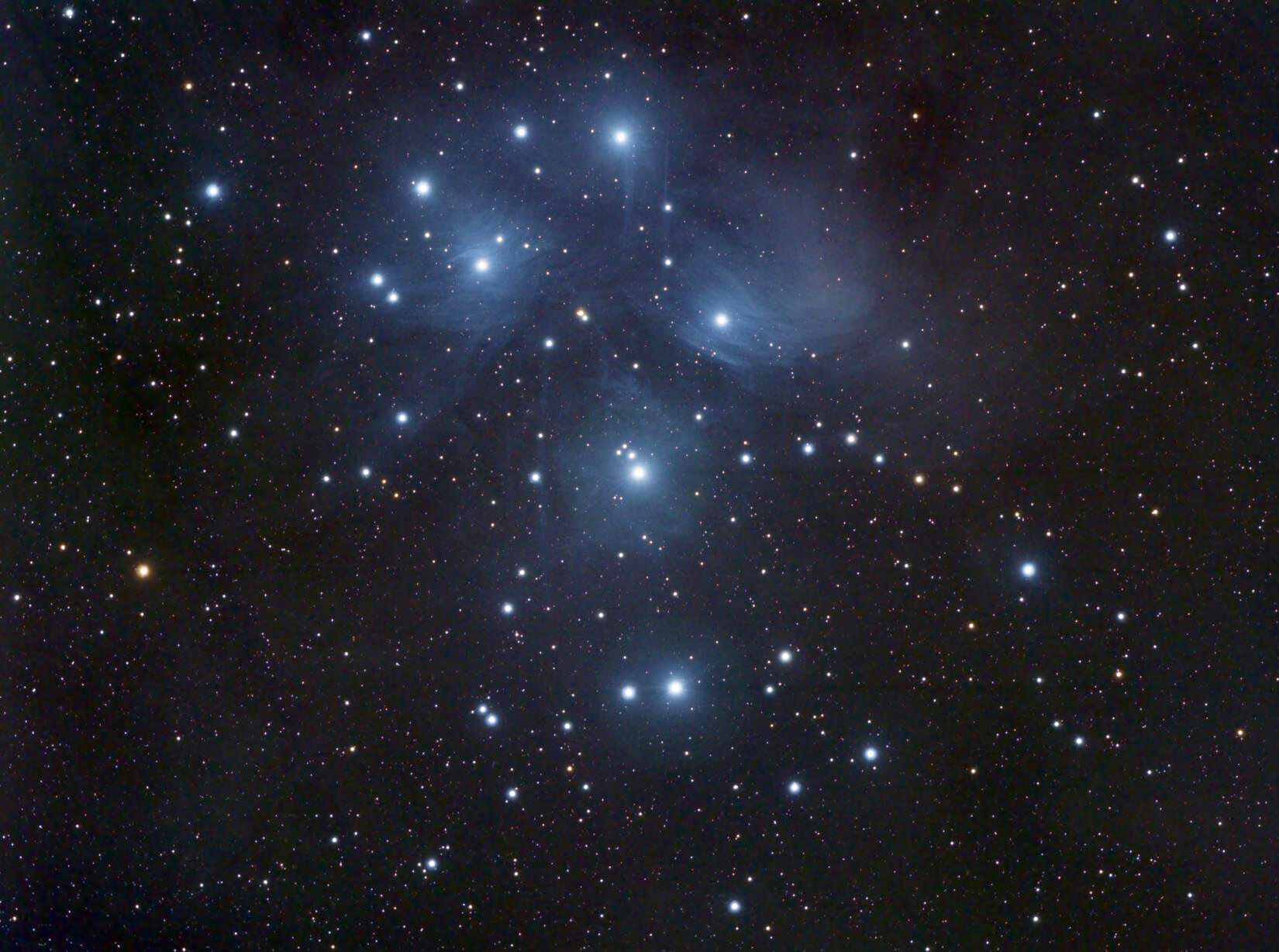A bank holiday beckoned and the forecast was much better on the coast for Saturday night so we packed the van and headed for a new destination near the club dark site at Haw Wood Farm. This site is a little further south at a small village called Middleton and closer to the towns of Leiston and Saxmundham than Haw Wood but the light pollution was still pretty minimal for the UK. The site is a Camping & Caravan club certificated site called Golden Acres. It’s a grass field with good horizons spoilt only by a small wind turbine in the middle so site your telescope carefully. The light switches for the toilet block were easy to find and I turned them off after everyone else had gone to bed after midnight and the full beauty of the sky here was revealed.
I started with some more images of my current galaxy project (NGC 4236) but once I’d realised that M4 was an easy binocular object even though it was only 10 degrees above the horizon I took a few 10 minute frames before it got too low. It did feel slightly odd taking pictures with the telescope tube almost horizontal and this is something I’d not be able to do at home with the Thetford light pollution due south of me.
The last picture I took was on the Sunday morning just as the sky was beginning to lighten after 2am. This is the Small Sagittarius Star Cloud (M24) and it was only 18 degrees above the horizon. This is a single 10 minute frame taken with the QHY9 and the Baby-Q, processed with Pixinsight.
